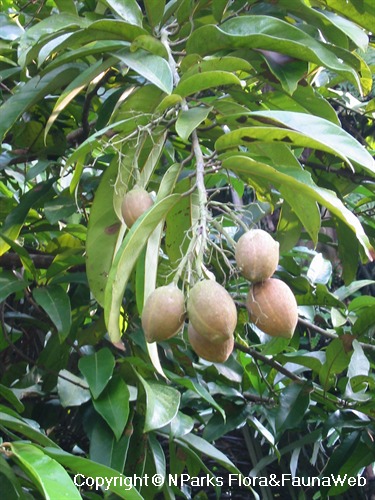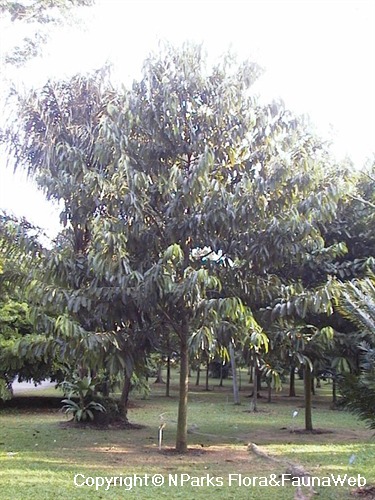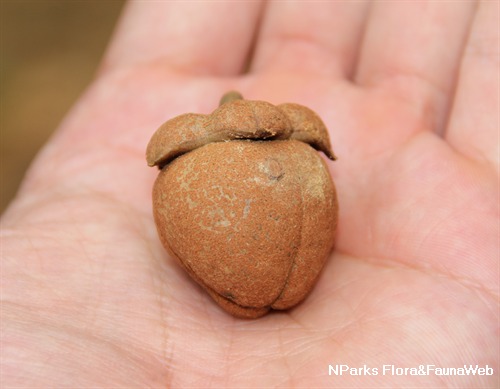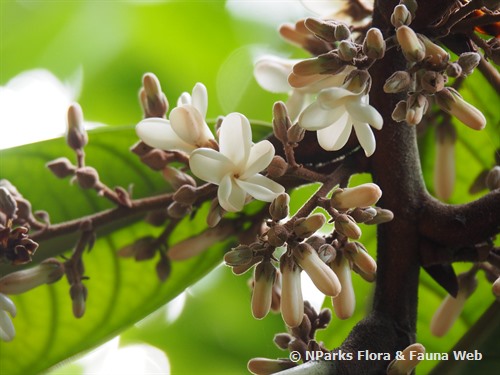
Name
Classifications and Characteristics
| Plant Growth Form | Tree |
|---|
Biogeography
| Native Distribution | Borneo, Philippines, Sulawesi, Moluccas, New Guinea |
|---|
Description and Ethnobotany
| Growth Form | Large tree, able to grow up to about 30 - 35 m tall. |
|---|---|
| Trunk | Sticky resin exudes from the tree when injured. |
| Foliage | Green leaves, narrowly elliptic, simple and alternate arrangement, surface glabrous, distinct triangular stipules about 14 mm long. |
| Flowers | White to whitish-yellow flowers borne on a panicle inflorescence. |
| Fruit | Fruit is brownish-green, oblong-shaped, about 4 cm long. |
| Others - Plant Morphology | A Bornean caterpillar was discovered to use the dried resin of the tree to construct its cocoon. |
| Etymology | Genus Vatica is from the Latin word"vates" which means "a foreteller or prophet". Species rassak is from a vernacular Malay name "rasak". |
| Ethnobotanical Uses | Medicinal: Compounds extracted from the stem bark have possible antibacterial and antitumor properties. |
Plant Care and Propagation
| Light Preference | Full Sun |
|---|---|
| Water Preference | Moderate Water |
| Plant Growth Rate | Moderate |
Foliar
| Mature Foliage Colour(s) | Green |
|---|
Floral (Angiosperm)
| Flower Colour(s) | Yellow / Golden, White |
|---|
Image Repository
Others
| Master ID | 1905 |
|---|---|
| Species ID | 3198 |
| Flora Disclaimer | The information in this website has been compiled from reliable sources, such as reference works on medicinal plants. It is not a substitute for medical advice or treatment and NParks does not purport to provide any medical advice. Readers should always consult his/her physician before using or consuming a plant for medicinal purposes. |



-(18).jpg)


